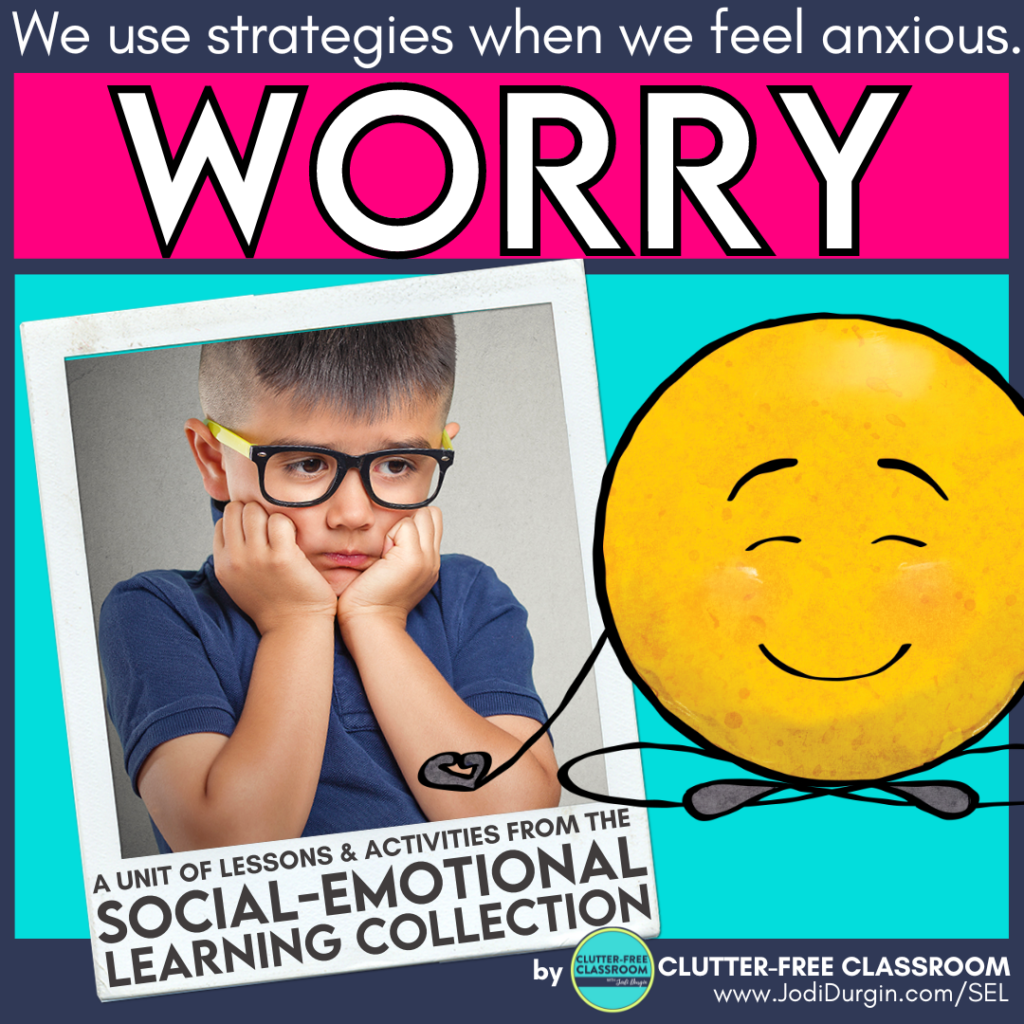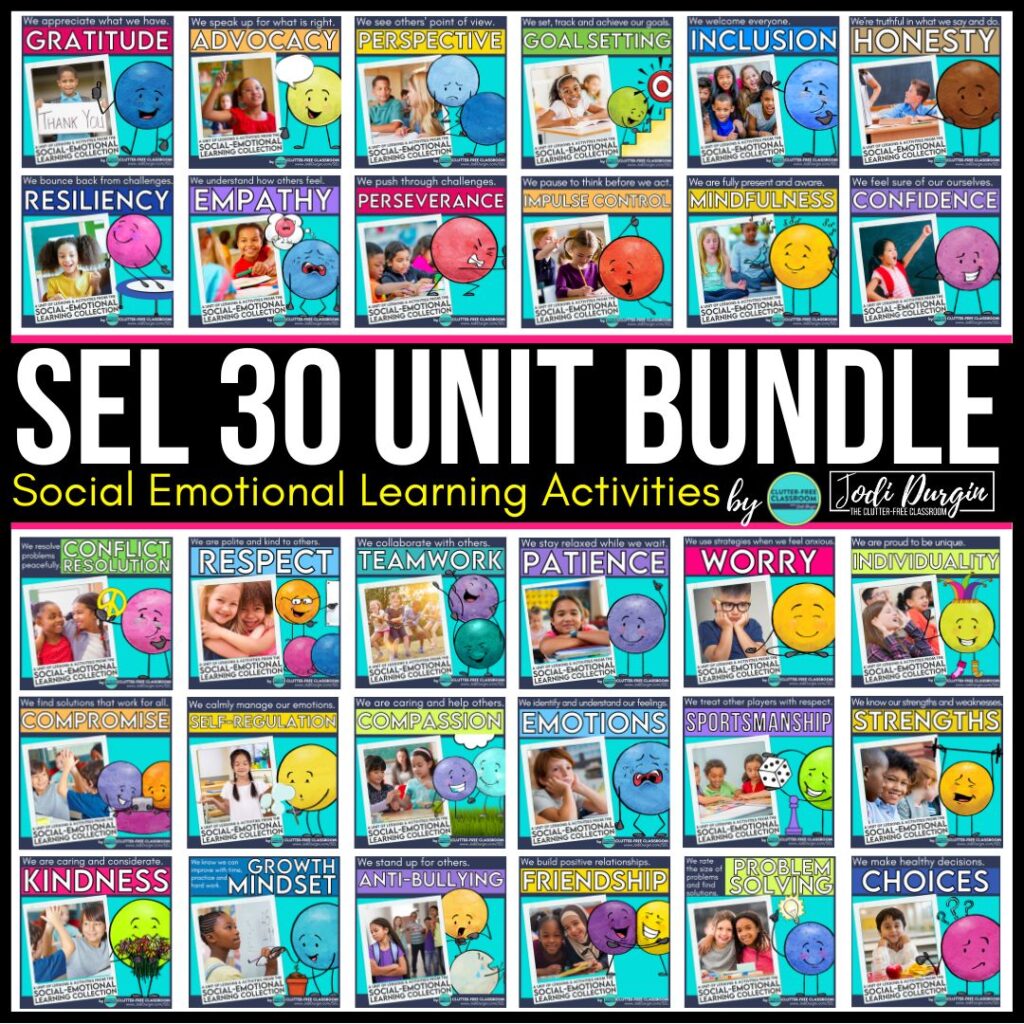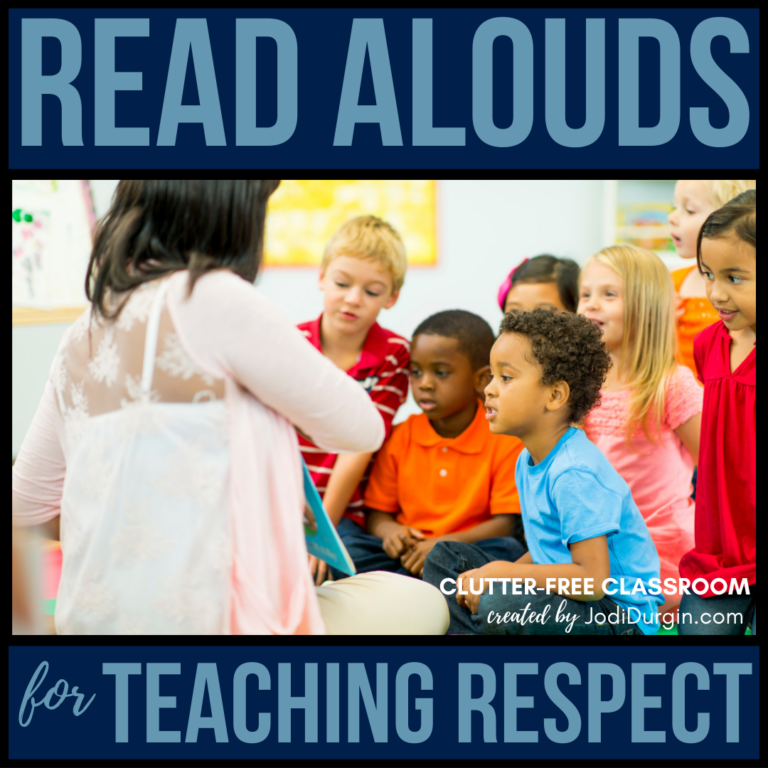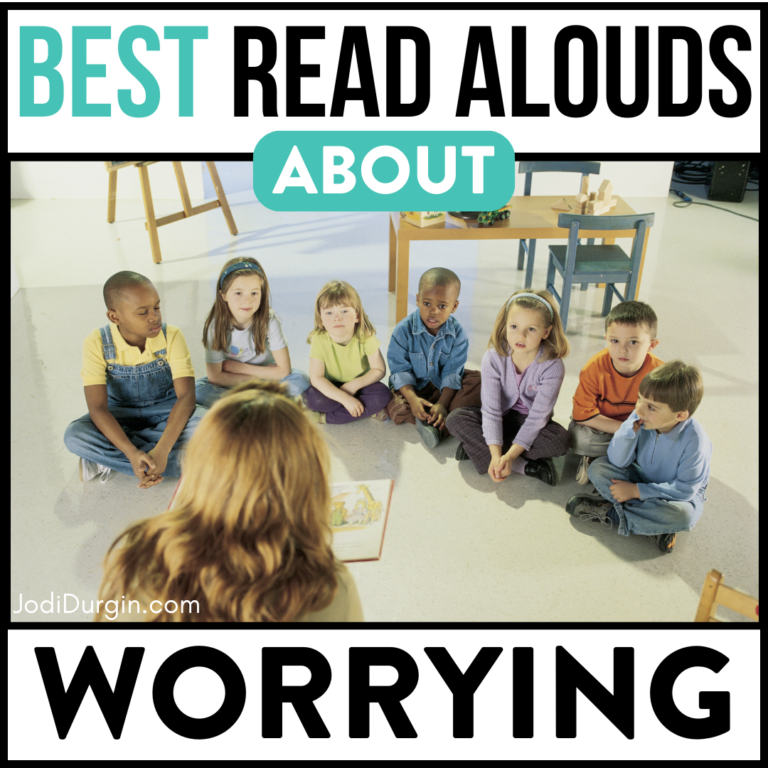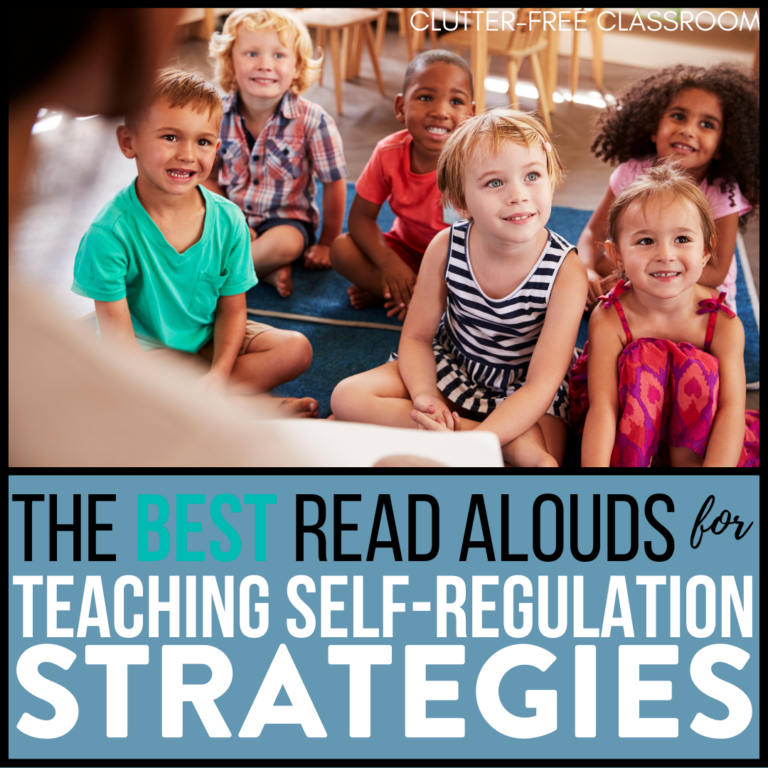If you are an elementary teacher looking to learn how to help your students manage worry, then you found the right place! Managing worry prepares kids to self-regulate during stressful situations or situations that make them anxious. Students who are able to identify and manage worry are more regulated than students who cannot. In this post, we’ll go into detail about what managing worry is and why it’s important for teachers to spend time teaching coping skills. In addition, we’ll share tips and ideas for how to teach skills for managing worry in an elementary classroom setting. Read all about helping students identify and manage their worry in and out of the classroom below!
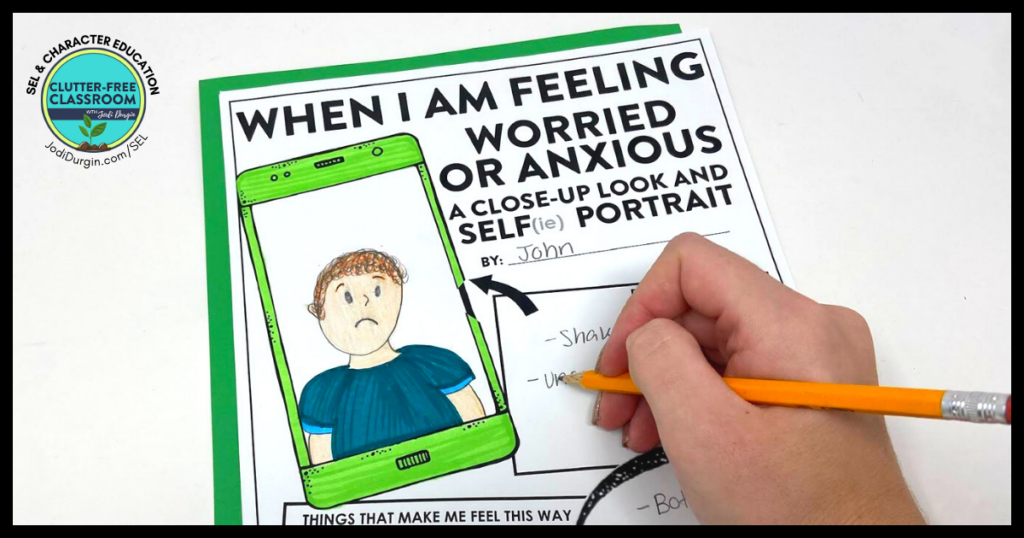
What Does Worry Mean?
Worry means to have a feeling of anxiety or unease and focus on that feeling. Worrying means allowing one’s mind to dwell on difficulty or troubles.
Why is it Important for Kids to Manage Worry?
It is important for kids to be able to identify worry and manage it because it is an uncomfortable feeling that kids typically are unfamiliar with managing. When kids are able to identify what causes them to feel worried and select coping strategies to help manage that feeling, they are able to react to it in positive ways.
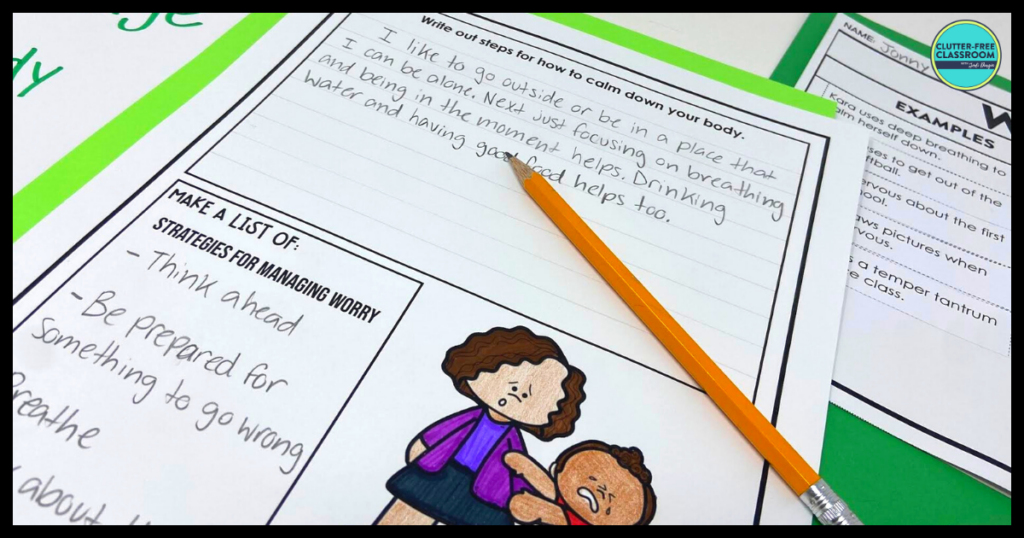
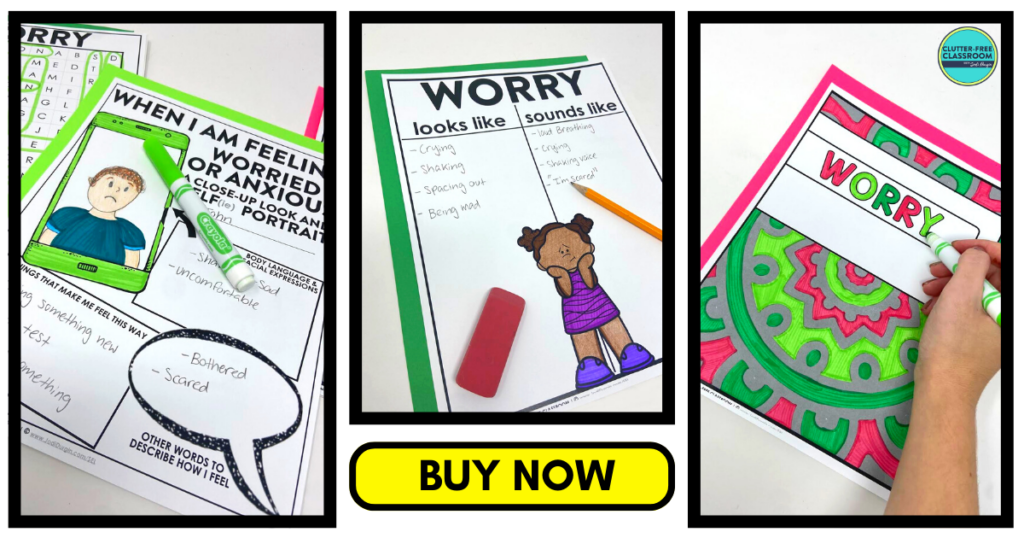
How Do I Know If I Need to Teach Managing Worry in My Classroom?
The students in your 1st, 2nd, 3rd, 4th or 5th grade classroom would benefit from managing worry lessons and activities if any of these statements are true:
- Students frequently ask “what if” questions.
- Students have been having frequent outbursts or shutting down.
- They need a variety of coping strategies.
- Students have difficulty concentrating throughout the day.
- Students want to do everything perfectly for fear of getting it wrong.
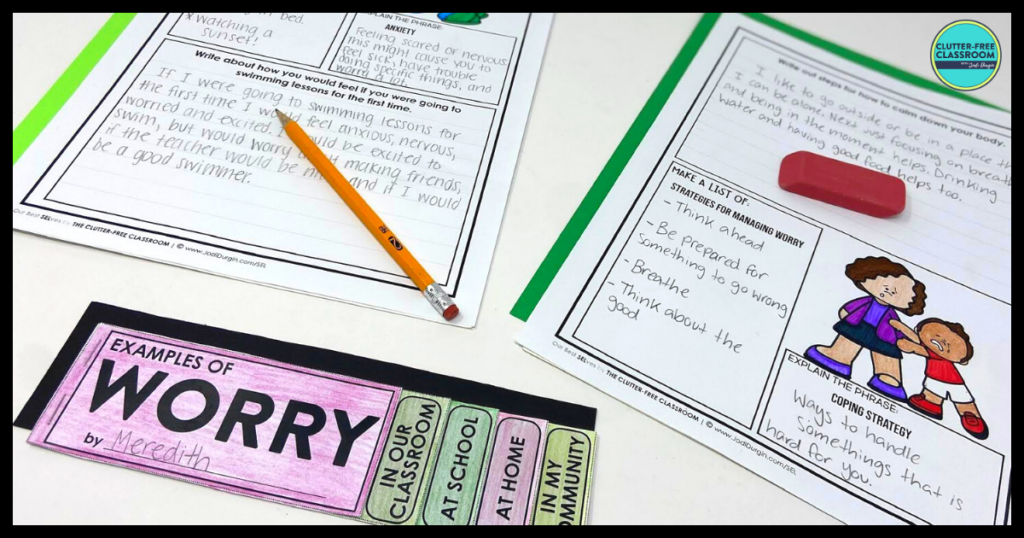
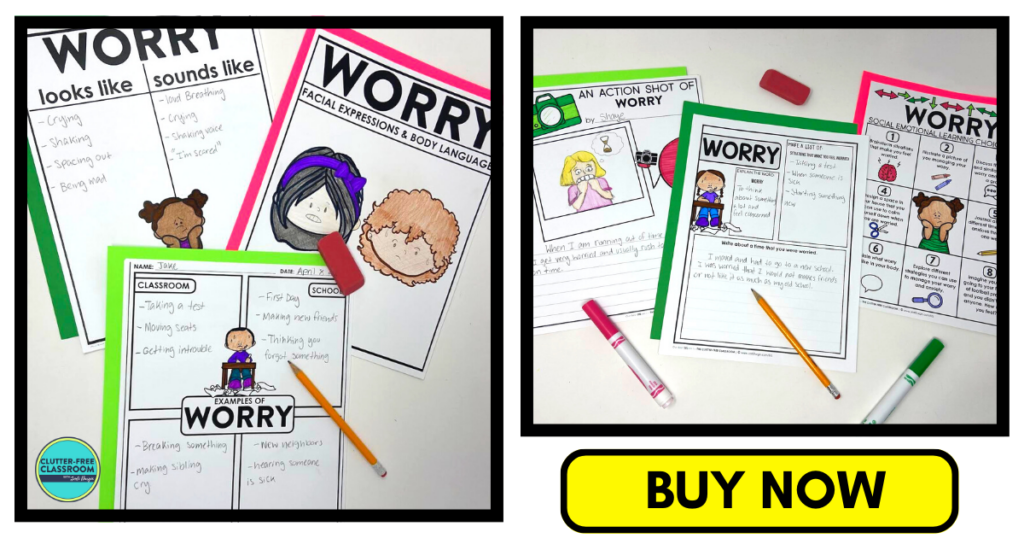
5 Reasons To Promote Managing Worry In Your Elementary Classroom
Below are 5 reasons to promote coping skills in your elementary classroom.
1. Students will learn coping strategies
Using coping strategies is an effective way to teach students to manage their worries. These can look like deep breathing, drawing, taking a break and chatting with a friend about what is bothering them. Avoid telling your students who are feeling worried and anxious to “just relax.”
2. Teaching managing worry leads to conversations about gratitude
Having students use gratitude counteracts students having anxious thoughts because they will be having positive thoughts instead. Having a gratitude journal is a great strategy for managing worry. When students are feeling worried they can jot down three things that they are thankful for and their positive thoughts will push out the negative ones.
3. Conversations about managing worry can promote healthy habits
One great way to manage worry is to exercise. While you only have so much control over how much exercise your students get, you can at least have conversations about how movement makes your brain think more positively and incorporate movement into your school day.
4. Students will take more chances with their learning
Students who are feeling worried are bogged down by “what ifs” and can be worried to do anything imperfectly. Having students learn to manage their worry will open up the door to move away from what ifs and take chances in their learning. When they learn to manage worry they will be more comfortable making mistakes.
5. Students will be able to better focus throughout the day
Worry and anxiety can cause students to zone out or be constantly thinking about the different situations that are making them anxious. They will be better able to focus when they can manage this anxiety and choose a coping strategy that works best for them and the situation.
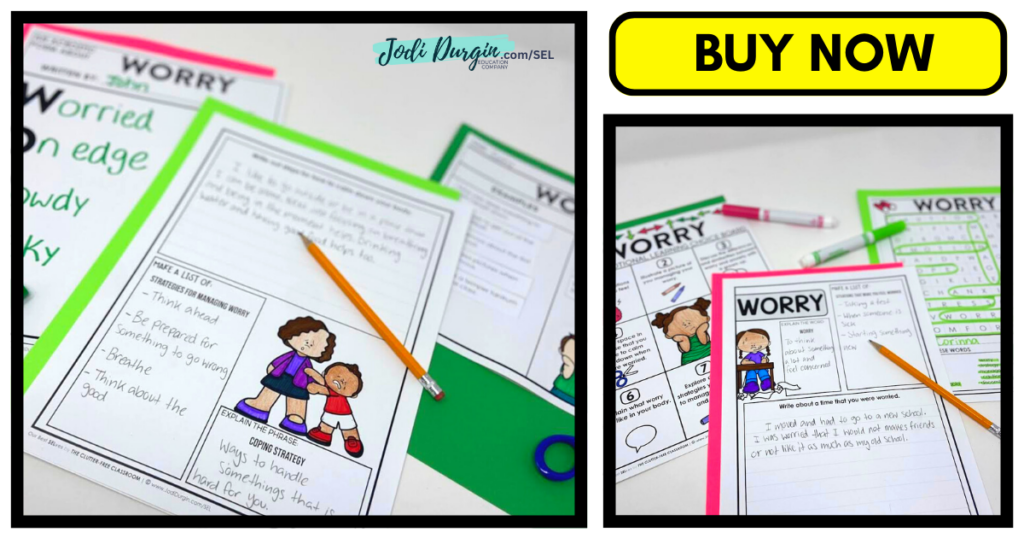
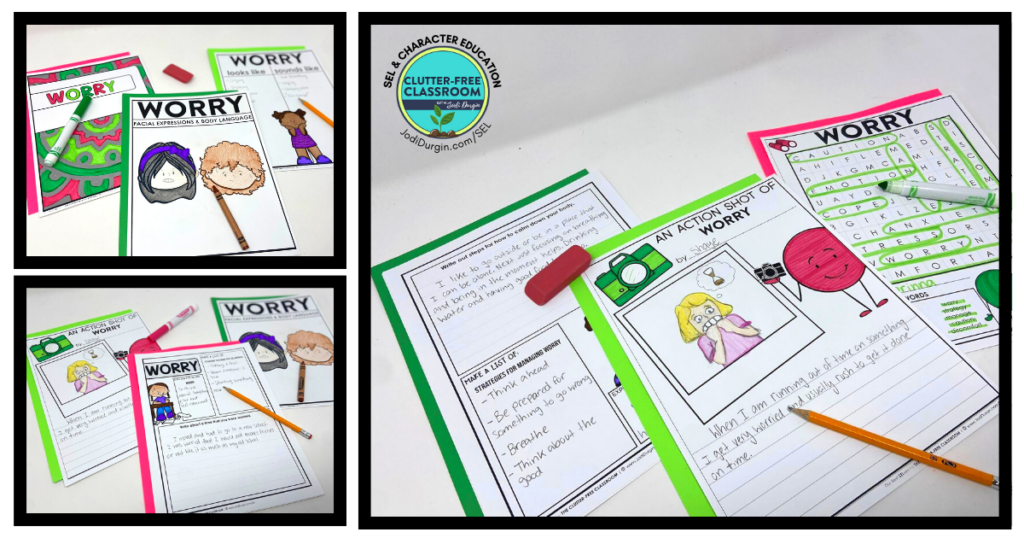
5 Tips and Ideas for Teaching Managing Worry
Below are tips and ideas for teaching coping skills for managing worry.
1. Read Aloud Picture Books about Managing Worry
Picture books are a great way to introduce and teach an SEL topic. It gets students thinking about the topic and activating their background knowledge. Check out this list of picture books for teaching managing worry!
2. Watch Videos about Managing Worry
There are tons of free online videos out there that promote social emotional learning. It’s a fun and engaging way to teach SEL skills that your students will enjoy. Check out these videos for teaching managing worry!
3. Explicitly Teach Vocabulary Related to Worry
Vocabulary words can help students develop understanding of managing worry and create connections through related words. Our managing worry SEL unit includes ten vocabulary cards with words related to the SEL topic. It is important for students to be able to see, hear, and use relevant vocabulary while learning. One idea for how to use them is to create an SEL word wall as students learn the words.
4. Provide Practice Opportunities
When learning any skill, students need time to practice. Social emotional learning skills are no different! Our managing worry SEL unit includes scenario cards, discussion cards, choice boards, games, and much more. These provide students with opportunities to practice the skills independently, with partners or small groups, or as a whole class.
5. Integrate Other Content Areas
Integrating other content areas with this topic is a great way to approach this SEL topic. Our managing worry SEL unit includes reading, writing, and art activities.
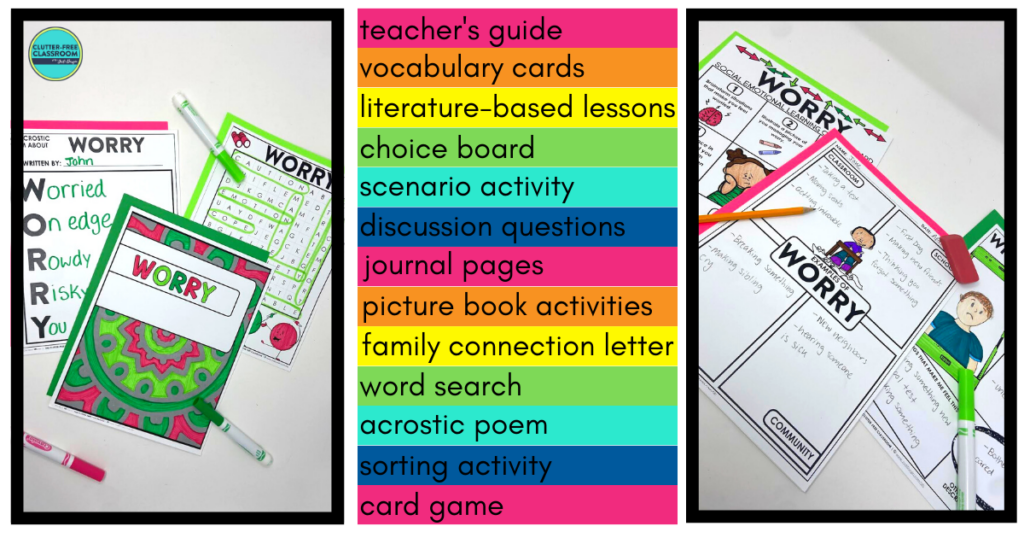
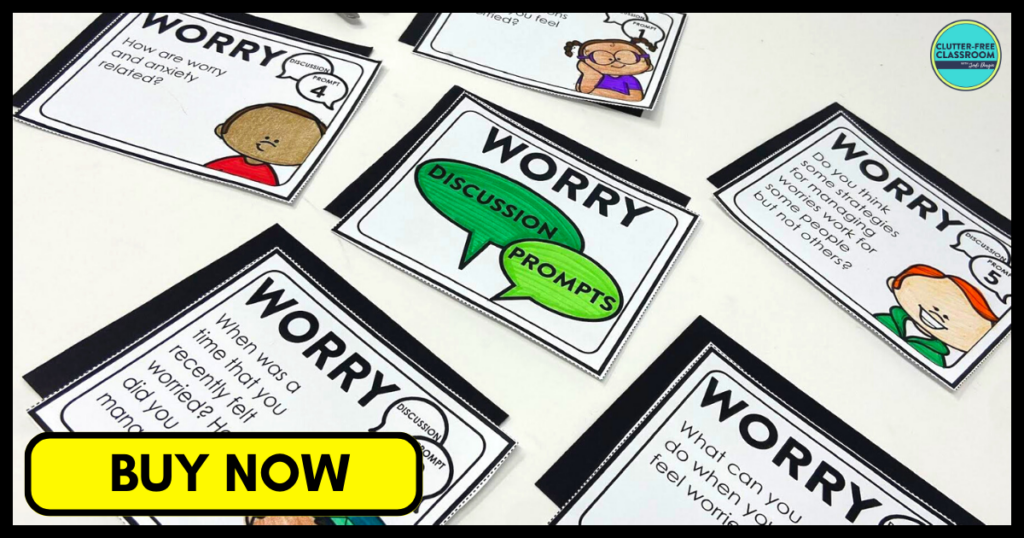
Skills Related to Worry
Worry, in the context of social emotional learning (SEL) or character education, refers to the state of being anxious, concerned, or uneasy about actual or potential problems or uncertainties. While “worry” is the commonly used term, there are other words and phrases that can convey a similar meaning. These alternative words highlight different aspects of anxiety, concern, and unease. Here are some other words used in the context of worry:
- Anxiety: A feeling of unease, apprehension, or nervousness about future events or uncertainties.
- Concern: Feeling troubled or preoccupied about something, often involving care or interest.
- Distress: Emotional or mental suffering caused by worry, sadness, or discomfort.
- Apprehension: Feeling uneasy or fearful about what might happen in the future.
- Uneasiness: A state of discomfort or restlessness caused by worry or uncertainty.
- Nervousness: A state of agitation or restlessness resulting from worry or anxiety.
- Fear: An emotional response to perceived threats or dangers that can lead to worry or unease.
- Trepidation: A feeling of fear or anxiety about something that may happen.
- Restlessness: The inability to relax or find peace of mind due to worry or anxiety.
- Preoccupation: Being absorbed or obsessed with thoughts or concerns, often leading to worry.
These terms encompass the concept of worry and reflect the feelings of anxiety, concern, and unease within the context of social emotional learning (SEL) or character education.
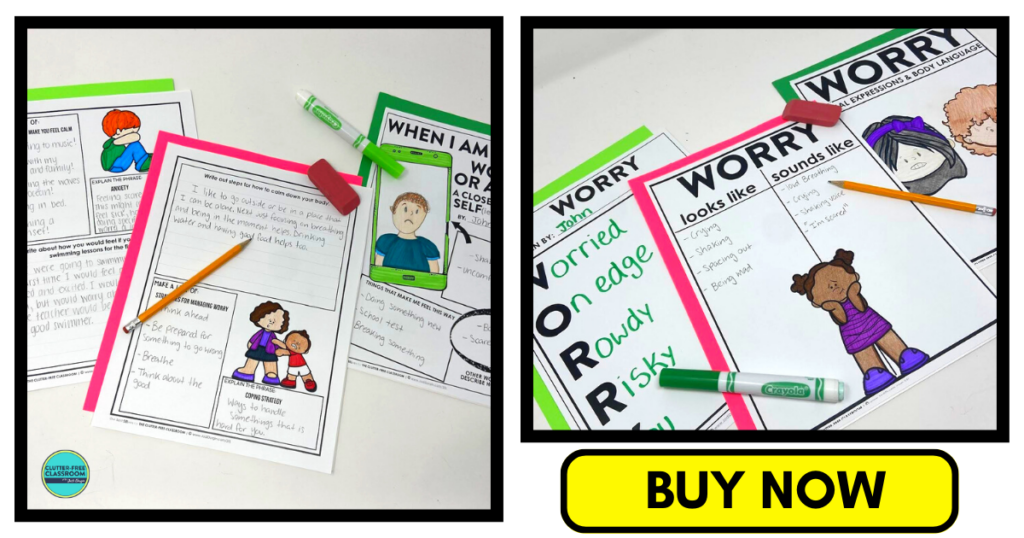
Download the SEL Activities
Click an image below to either get this individual worry unit or get ALL 30 SEL units!
In closing, we hope you found this information about teaching managing worry through coping skills instruction helpful! If you did, then you may also be interested in these posts.

